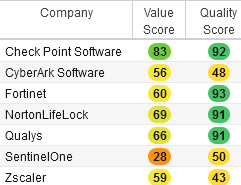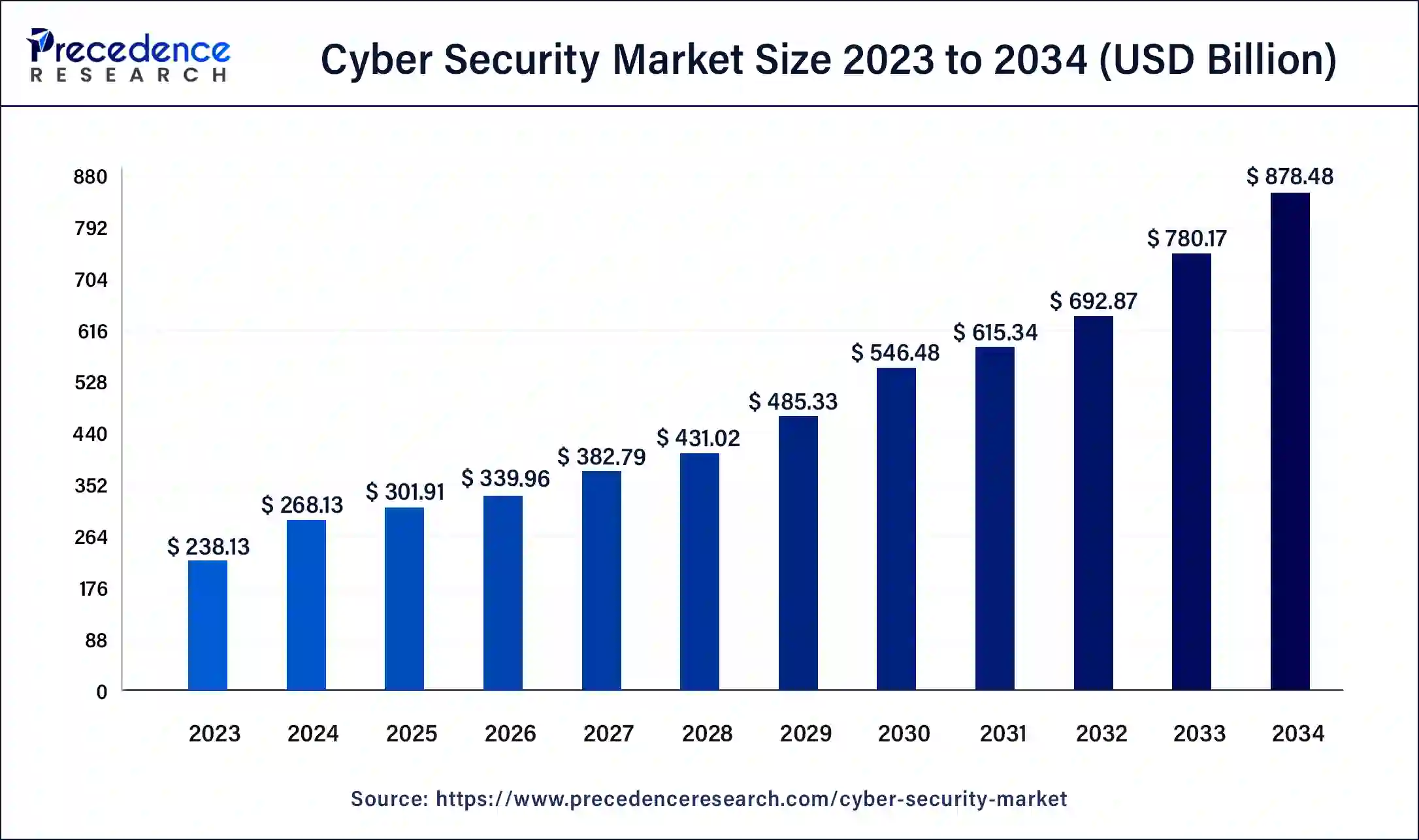Top OT Security Companies to Watch in 2025

As we step into 2025, the threat landscape for operational technology (OT) systems continues to evolve, with increasingly sophisticated cyberattacks targeting critical infrastructure. To combat these threats, innovative security companies are emerging with cutting-edge solutions. This article highlights the top OT security companies to watch in 2025, showcasing their groundbreaking technologies and strategies designed to protect OT environments from cyber threats. From industrial control systems to smart cities, these companies are shaping the future of OT security, ensuring the reliability and safety of our critical infrastructure. Their innovative approaches are worth exploring.
Emerging Trends in OT Security: Top Companies to Watch in 2025
The Operational Technology (OT) security landscape is evolving rapidly, driven by the increasing convergence of IT and OT systems, the growing threat of cyberattacks, and the need for more robust security measures. As we look ahead to 2025, several companies are poised to make a significant impact in the OT security space. These companies are developing innovative solutions to address the unique challenges of OT security, including threat detection, incident response, and security management.
Introduction to OT Security and Its Importance
OT security refers to the protection of industrial control systems (ICS), supervisory control and data acquisition (SCADA) systems, and other critical infrastructure from cyber threats. The importance of OT security cannot be overstated, as a successful attack could have devastating consequences, including disruption of critical services, economic loss, and even loss of life. Companies like IBM, Cisco, and Microsoft are investing heavily in OT security solutions, recognizing the need for robust security measures to protect these critical systems.
Key Players in the OT Security Market
Several companies are emerging as key players in the OT security market, including Palo Alto Networks, Check Point, and Fortinet. These companies offer a range of OT security solutions, including firewalls, intrusion detection systems, and security information and event management (SIEM) systems. They are also investing in research and development, working to stay ahead of the evolving threat landscape and develop innovative solutions to address the unique challenges of OT security.
Emerging Trends in OT Security
Several emerging trends are shaping the OT security landscape, including the use of artificial intelligence (AI) and machine learning (ML) to improve threat detection and incident response. Other trends include the adoption of cloud-based OT security solutions, which offer greater flexibility and scalability, and the increasing importance of security awareness training for OT personnel. Companies like Google and Amazon are also investing in OT security, recognizing the need for robust security measures to protect critical infrastructure.
Challenges and Opportunities in OT Security
Despite the importance of OT security, there are several challenges that must be addressed, including the lack of standardization in OT systems, the shortage of skilled OT security personnel, and the complexity of OT systems. However, these challenges also present opportunities for innovation and growth, as companies develop new solutions to address these challenges. For example, managed security service providers (MSSPs) are emerging as a key player in the OT security market, offering outsourced security services to organizations that lack the resources or expertise to manage their own OT security.
Future Outlook for OT Security
The future outlook for OT security is bright, with several companies poised to make a significant impact in the market. As the threat landscape continues to evolve, companies will need to stay ahead of the curve, investing in research and development and innovation to develop new solutions to address the unique challenges of OT security. The following table highlights some of the top OT security companies to watch in 2025:
| Company | Solutions | Key Features |
|---|---|---|
| Palo Alto Networks | Firewalls, intrusion detection systems | Advanced threat detection, incident response |
| Check Point | Firewalls, SIEM systems | Threat prevention, security management |
| Fortinet | Firewalls, intrusion detection systems | Advanced threat detection, incident response |
| IBM | OT security solutions, consulting services | Security management, threat detection |
| Cisco | OT security solutions, networking equipment | Security management, network security |
Will cybersecurity be in demand in 2025?
The demand for cybersecurity is expected to continue to grow in 2025, as technology advances and the threat of cyber attacks increases. This is because more and more businesses are moving online, and the risk of data breaches and other types of cyber threats is becoming a major concern. As a result, companies are looking for ways to protect themselves from these threats, and cybersecurity professionals are in high demand.
Increased Threats and Vulnerabilities
The increase in cyber attacks and data breaches is driving the demand for cybersecurity professionals. Some of the key reasons for this include:
- The rise of Internet of Things (IoT) devices, which are increasingly being used in businesses and homes, and are vulnerable to cyber attacks.
- The growing use of cloud computing, which can provide a wealth of benefits, but also increases the risk of data breaches and other types of cyber threats.
- The increasing sophistication of cyber threats, which are becoming more difficult to detect and prevent, and require cybersecurity professionals with advanced skills and training to combat.
This increase in cyber threats and vulnerabilities is driving the demand for cybersecurity professionals who can help protect businesses and individuals from these threats.
Emerging Trends and Technologies
There are several emerging trends and technologies that are driving the demand for cybersecurity professionals, including:
- The use of artificial intelligence (AI) and machine learning (ML) to detect and prevent cyber threats.
- The growing importance of incident response, which involves responding to and managing cyber attacks and data breaches.
- The increasing use of cloud security, which involves protecting cloud computing systems and data from cyber threats.
These emerging trends and technologies require cybersecurity professionals with advanced skills and training, and are driving the demand for cybersecurity professionals in 2025.
Job Prospects and Career Paths
The job prospects and career paths for cybersecurity professionals are excellent, with a wide range of job opportunities available in industries such as finance, healthcare, and government. Some of the key job roles include:
- Chief Information Security Officer (CISO), who is responsible for overseeing an organization's cybersecurity strategy and operations.
- Security Consultant, who helps businesses and individuals to assess and improve their cybersecurity posture.
- Incident Response Specialist, who responds to and manages cyber attacks and data breaches.
These job roles require cybersecurity professionals with advanced skills and training, and offer excellent career prospects and opportunities for advancement in 2025. Cybersecurity is a rapidly evolving field, and cybersecurity professionals must stay up-to-date with the latest technologies and threats to remain effective.
What are the top 5 cyber security stocks?

The top 5 cyber security stocks are a crucial investment opportunity in today's digital age. As technology advances, cyber threats are becoming more sophisticated, and companies are looking for ways to protect themselves. The top 5 cyber security stocks include Palo Alto Networks, Cyberark, Check Point, Fortinet, and CrowdStrike. These companies offer a range of cyber security solutions, from network security to identity management.
Top Cyber Security Stocks to Watch
The top cyber security stocks to watch are those that are constantly innovating and improving their security solutions. Some of the key factors to consider when investing in cyber security stocks include the company's financial performance, market share, and product offerings. Here are some key points to consider:
- The company's ability to detect and respond to cyber threats in real-time
- The company's cloud security offerings and ability to protect cloud-based infrastructure
- The company's artificial intelligence and machine learning capabilities to improve threat detection
Cyber Security Stock Market Trends
The cyber security stock market is constantly evolving, with new threats and solutions emerging every day. Some of the key trends in the cyber security stock market include the increasing demand for cloud security and artificial intelligence-powered security solutions. Companies that are able to innovate and adapt to these trends are likely to see significant growth in the future. Here are some key points to consider:
- The increasing demand for cyber security solutions in the healthcare and financial industries
- The growing importance of incident response and disaster recovery planning
- The need for continuous monitoring and vulnerability assessment to identify and mitigate cyber threats
Investing in Cyber Security Stocks
Investing in cyber security stocks can be a lucrative opportunity, but it requires careful consideration and research. It's essential to understand the company's financials, market position, and product offerings before making an investment decision. Here are some key points to consider:
- The company's revenue growth and profitability
- The company's competitive advantage and market share
- The company's innovation pipeline and ability to stay ahead of emerging cyber threats
How big is the cyber security market in 2025?

The cyber security market is expected to grow significantly by 2025, driven by the increasing number of cyber threats and the need for organizations to protect their data and networks. The market size is projected to reach $300 billion by 2025, with a compound annual growth rate (CAGR) of 12%. This growth can be attributed to the rising demand for security solutions, such as firewalls, intrusion detection systems, and encryption technologies.
Market Drivers
The growth of the cyber security market can be attributed to several factors, including the increasing number of cyber attacks, the growing use of cloud computing, and the need for compliance with regulatory requirements. Some of the key drivers of the market include:
- Increased use of mobile devices, which has led to a rise in mobile-based cyber threats
- Growing adoption of Internet of Things (IoT) devices, which has increased the attack surface for cyber threats
- Rising demand for cloud-based security solutions, which offer scalability and flexibility
Market Trends
The cyber security market is experiencing several trends, including the use of artificial intelligence (AI) and machine learning (ML) to detect and prevent cyber threats. Some of the key trends in the market include:
- Increased use of threat intelligence, which provides real-time information on cyber threats
- Growing adoption of Security Orchestration, Automation, and Response (SOAR) solutions, which help streamline security operations
- Rising demand for cloud security solutions, which offer protection for cloud-based data and applications
Market Opportunities
The cyber security market presents several opportunities for vendors and service providers, including the development of new security solutions and the provision of managed security services. Some of the key opportunities in the market include:
- Development of next-generation security solutions, which offer advanced protection against cyber threats
- Provision of managed security services, which help organizations outsource their security operations
- Partnership with cloud service providers, which offer security solutions for cloud-based data and applications
What is the fastest growing cyber security company?

The fastest growing cyber security company is a topic of significant interest in the rapidly evolving cybersecurity landscape. Several companies have been making waves in this sector, but one that stands out is CrowdStrike. This company has been at the forefront of cloud-delivered endpoint protection, leveraging artificial intelligence and machine learning to detect and prevent cyber threats in real-time.
Key Factors Driving Growth in Cyber Security Companies
The growth of cyber security companies can be attributed to several key factors, including the increasing frequency and sophistication of cyber attacks, the need for compliance with regulatory requirements, and the adoption of cloud computing. As more businesses move their operations online, the demand for robust cybersecurity solutions grows. Some of the key drivers include:
- Threat Intelligence: The ability to gather and analyze threat data to predict and prevent attacks.
- Endpoint Security: Protecting endpoints such as laptops, desktops, and mobile devices from malware and other threats.
- Incident Response: Having a plan in place to respond quickly and effectively to security incidents.
Emerging Trends in Cyber Security
Emerging trends in cyber security include the use of advanced analytics and machine learning algorithms to detect and respond to threats. There is also a growing focus on cloud security, as more businesses move their operations to the cloud. Additionally, Zero Trust Architecture is becoming increasingly popular, as it provides an additional layer of security by verifying the identity of users and devices before granting access to sensitive data. Some of the key trends include:
- Increased Use of AI: Artificial intelligence is being used to automate security tasks and improve threat detection.
- Growing Importance of Cloud Security: As more businesses move to the cloud, the need for robust cloud security solutions is growing.
- Rise of Zero Trust Architecture: Zero Trust Architecture is becoming increasingly popular, as it provides an additional layer of security by verifying the identity of users and devices.
Challenges Faced by Cyber Security Companies
Cyber security companies face several challenges, including the need to stay ahead of evolving threats, attract and retain top talent, and navigate complex regulatory requirements. Additionally, there is a growing need for cybersecurity awareness and training, as human error is often the weakest link in cybersecurity. Some of the key challenges include:
- Evolving Threat Landscape: Cyber threats are constantly evolving, making it challenging for cybersecurity companies to stay ahead.
- Talent Shortage: There is a shortage of skilled cybersecurity professionals, making it difficult for companies to attract and retain top talent.
- Complex Regulatory Requirements: Cybersecurity companies must navigate complex regulatory requirements, which can be time-consuming and costly.
Frequently Asked Questions
What are the key factors driving the growth of the OT security market in 2025?
The growth of the Operational Technology (OT) security market in 2025 is driven by several key factors, including the increasing connectivity of OT systems to the internet, the rising sophistication of cyber threats, and the growing regulatory requirements for OT security. As OT systems become more connected, they become more vulnerable to cyber attacks, which can have devastating consequences for critical infrastructure and industrial operations. Therefore, companies are investing heavily in OT security solutions to protect their systems and data from unauthorized access and malicious activities. The adoption of IoT devices and the increasing use of cloud-based services are also driving the growth of the OT security market, as these technologies introduce new vulnerabilities and risks that need to be addressed.
Which companies are leading the way in OT security innovation in 2025?
Several companies are leading the way in OT security innovation in 2025, including Palo Alto Networks, Cisco Systems, and Fortinet. These companies are developing advanced security solutions that can detect and prevent OT-specific threats, such as ICS malware and SCADA attacks. They are also investing in research and development to stay ahead of the evolving threat landscape and to develop new security technologies that can protect OT systems from emerging threats. Other companies, such as IBM and Microsoft, are also making significant contributions to OT security innovation, with a focus on cloud-based security solutions and artificial intelligence-powered security. These companies are helping to drive the adoption of OT security solutions and to improve the security posture of organizations in critical infrastructure sectors.
What are the most significant OT security challenges facing companies in 2025?
Companies in 2025 face several significant OT security challenges, including the lack of visibility into OT systems and networks, the insufficient security controls in place to protect OT systems, and the limited expertise and resources available to manage OT security. The complexity of OT systems and the diversity of devices and protocols used in these systems also make it difficult to implement effective security measures. Additionally, the convergence of IT and OT systems is creating new security risks and vulnerabilities, as IT threats can now easily spread to OT systems. Companies must also contend with the ever-evolving threat landscape, as new threats and vulnerabilities are continually emerging. To address these challenges, companies need to invest in OT security solutions and services that can provide real-time visibility and threat detection, as well as incident response and remediation capabilities.
How can companies ensure the security of their OT systems in 2025?
To ensure the security of their OT systems in 2025, companies should implement a comprehensive OT security strategy that includes network segmentation, access control, and threat detection. They should also invest in OT-specific security solutions, such as industrial control system (ICS) security and SCADA security, to protect their OT systems from targeted attacks. Companies should also conduct regular security assessments and risk analyses to identify vulnerabilities and weaknesses in their OT systems, and implement patches and updates to address these issues. Additionally, companies should develop incident response plans and conduct regular training exercises to ensure that they are prepared to respond to OT security incidents. By taking a proactive approach to OT security, companies can reduce the risk of cyber attacks and protect their critical infrastructure from disruption and damage.
Leave a Reply